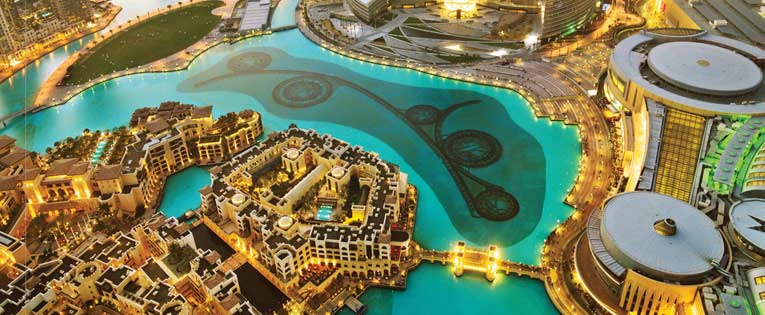
For anyone wanting to do business in the Middle East, the first port of call is the small but strategically located Emirate of Dubai, nestled in the breathtaking desert of the Arabian Peninsula and overlooking the pristine Persian Gulf. Its opulence and sophistication is world-renowned, being the home of the world's tallest building, the Burj Khalifa skyscraper. It also houses one of the world's most expensive hotels, the Burj al-Arab, and the state-of-the-art Dubai International Financial Center (DIFC).
Dubai is at the very heart of the Middle Eastern financial system, both legitimate and illegitimate. It is the gateway to the $1.2 trillion Islamic finance industry that is set to grow to $4 trillion over the next few years,1 as well as the multi-billion-dollar Afghan opium trade.2
Dubai: The Heart of the Persian Gulf and the Petrodollar
The International Energy Agency in its 2009 World Energy Outlook, estimated that between 2008 and 2030, OPEC oil revenues would amount to $23 trillion.3
According to Jose Franco of the Khaleej Times, the consolidated balance sheets of Arab banks reached $2 trillion in 2007.4 The net foreign assets of the countries of the Gulf Cooperation Council are expected to surge from $1.049 trillion at the end of 2009 to $1.34 trillion by the end of 2011, or the equivalent to 122 percent of the region's GDP.5 Meanwhile, according to Invesco, the Gulf region's Sovereign Wealth Funds—which accounts for 44 percent of global SWF flows, representing just over $1 trillion—are stepping back from overseas and stepping up to domestic investments in the wake of the "Arab Spring."6 The GCC alone is expected invest $3 trillion in infrastructure projects by 2020.7 Consequently, the Middle East in general, and Dubai in particular, has become a magnet for "financiers" from all over the world, who wish to cash in on the inexorable rise of the petrodollar.
In 2009, the venerable magazine The Banker estimated that 48 countries, 628 registered and 435 shariah compliant institutions, comprised the $1 trillion Islamic finance industry.8 According to the Dubai Chamber of Commerce and Industry, Islamic banks in the United Arab Emirates, the second largest Arab economy, continued steady growth in 2010, with the assets of its banks up by about 11 percent.
At the end of 2010, the UAE had eight Islamic banks, with nearly 260 branches, controlling about $54 billion in deposits. They accounted for around 10.9 percent of the total deposits with the country's 23 national banks and 28 foreign units.9 Bottom line, Islamic finance is huge and growing.
On the other hand, in 2009, in terms of assets, with $293.2 billion, Iran, followed by Saudi Arabia ($127.9 billion), had the largest amount of shariah compliant assets. Iranian banks accounted for about 40 percent of the total assets of the world's top 100 Islamic banks, with OFAC sanctioned Bank Melli Iran the largest, amassing assets of $45.5 billion, leading the way. Other Iranian sanctioned banks then followed it in close order: Bank Mellat with $39.7 billion and Bank Saderat Iran with $39.3 billion. In fact, 6 out of 10 of the largest Islamic banks are Iranian.10 Accordingly, western banks have to be careful about with whom they are doing business, and recognize that Iran is the cornerstone of Islamic finance today.
Bottom line, Islamic finance is huge and growing
The near collapse of state-owned Dubai World at the end of 2009 painfully exposed the perils of the underdeveloped and under regulated Islamic finance industry. Its failed $4.1 billion Islamic bond (sukuk) Nakheel and being laden with $10.9 billion in debt11 utilized to fund the construction of the ambitious Palms project, along with grandiose exclusive properties on land in the shape of the countries of the world which jutted out into the sea,12 precipitated a property market crash.13 This was all a far cry from the November 2006 launch of the $2.5 billion Nakheel sukuk. Its architects declared that the sukuk would conform to the principles of Islamic Sharia, and would be based on the Islamic principle of Ijara (lease financing). In press pronouncements at the time, Dubai World guaranteed the payment obligations under the Sukuk. Dr. Mohamed Khalfan bin Kharbash, UAE Minister of State for Finance and Industry and Chairman of DIB, said: "This landmark transaction for Dubai World and the Nakheel Group will set new benchmarks in the financial industry… The Sukuk's first of its kind equity-linked structure makes it an attractive transaction for a wide range of investors."14 It was not to be:, western investors learnt to their detriment many of the weaknesses of Islamic finance, including its lack of transparency and accountability, as well as its failure to effectively protect creditors, many of whom found themselves with no recourse, and others the mere hope of cents on the U.S. Dollar for their investment in this once heralded sukuk.
Afghan Drug Trade and Narco-Terrorism
Afghanistan provides more than 90 percent of the global supply of illicit opiates (opium, heroin and morphine). The value of the global opiate market is estimated at $65 billion. A mere 5–10 percent ($3–$5 billion) of these illicit funds is laundered by informal banking systems, the rest of the $65 billion is being laundered through legal trade activities and the conventional banking system.15
In 2006–2007, the drug-related funds accruing to Afghan insurgents and warlords were estimated by UNODC at $200–$400 million a year.16 Afghanistan's opiate exports have shifted toward a greater share of refined products. This has allowed the Taliban to tax higher value-added commodities (refined products) and other drug-related activities: lab processing, trafficking and the import of precursors—a business worth around $3 billion in 2007 in Afghanistan alone.
Furthermore, the Taliban and other Al Qaeda linked groups have been taking an ever-increasing share of the $1 billion opiate market in Pakistan.17 In Pakistan, Shinwaris, the second largest tribe of Khyber, own significant logistics companies, some with offices in Pakistani ports as well as Dubai.18 Members of the large Afghan diaspora in Dubai are useful to traders, both for small-scale trafficking and large financial movements.19 This reality should make western financial institutions vigilant when dealing with this important but dangerous part of the world.
According to Juan Miguel del Cid Gómez, al-Barakaat, a network of companies, including telecommunications and construction companies, as well as money remittance and cash exchange services from the United States and Somalia, formed an integral part of Al Qaeda's early fundraising efforts. Al-Barakaat managed, invested and distributed funds for Al Qaeda. Most of Bin Laden's transactions were carried out between Mogadishu (Somalia), Dubai (UAE) and Mombassa and Nairobi (Kenya). Further, Gomez notes that many hawala transactions originate in, or are destined for, either Dubai or Yemen. Lastly, he points out that one of the financial backers of the 9-11 attacks, Khalid Sheikh Mohamed, passed a large amount of money (possibly as much as $200,000) to Abdul Aziz Ali in Dubai, who subsequently transferred it to the hijackers in the U.S.20
U.S. diplomatic cables published by Wikileaks underscored the vulnerability of UAE in general, and Dubai in particular, to money laundering and terrorist financing: "The point can be emphasized that the UAE's role as a growing global financial center, coupled with weak regulatory oversight, makes it vulnerable to abuse by terrorist financiers and facilitation networks," the state department cable said. In another cable from December 2009, Howard Mendelsohn, the U.S. Treasury Department Acting Assistant Secretary of the Office of Intelligence and Analysis, stated that the "Taliban and Haqqani Network [a Pakistan-based group fighting NATO forces in Afghanistan] are believed to earn money from UAE-based business interests."21
Dubai real estate has a notorious reputation as a front for laundering
In December 2010, two Pakistani brothers, asserted to be in contact with then Al Qaeda number three Abu al-Yazid, went on trial in the UAE. The two businessmen were accused of supplying laptops, telescopes, specialized pencil torches and Swiss knives to Waziristan, a hotbed of Al Qaeda, Taliban and other radical Islamic groups.22
More recently, the Wall Street Journal reported that Ousama Abushagur, a 31-year-old Libyan telecom executive raised in Huntsville, Alabama, masterminded a rebel relief operation from his home in Abu Dhabi. Mr. Abushagur and two childhood friends working as corporate managers in Dubai and Doha started fundraising on February 17, 2011, to support the political protests that were emerging in Libya. By February 23, when fighting had erupted, his team delivered the first of multiple humanitarian aid convoys to eastern Libya.23
A Global Center for Money Laundering
Naresh Kumar Jain is an Indian multimillionaire suspected of being one of the world's biggest money launderers. Investigators believe that his businesses are based on huge sums of cash originating in Africa and being passed on to him by diamond smugglers and drug dealers, most of which flows into Dubai in suitcases. For their part, organized piracy syndicates operating in Dubai and other Gulf states are laundering vast sums of money taken in ransom from vessels hijacked off the Horn of Africa. According to an article in the British Observer newspaper, in December 2009, then U.S. Ambassador to Afghanistan, E. Anthony Wayne, noted that every day $10 million in cash is being smuggled from Kabul to Dubai in briefcases. Wayne said a U.S. investigation found that $190 million in cash was smuggled in just 18 days.
Nick Mathiason of the Fairtrade Foundation and previously business correspondent at the Guardian and Observer newspapers for 10 years was quoted in a January 2010 article in The Observer: "Insiders say that obtaining a UAE passport, which allows the bearer to open a bank account, is still relatively easy. Experts suggest that airport customs in some of the UAE states provide easy routes to move goods and cash around. In addition, Dubai real estate has a notorious reputation as a front for laundering, where apartments are bought up by unknown entities who never live there."24
It should have been no surprise when OFAC in February 2011 placed three Dubai companies—Al Adal Exchange, Green Leaf General Trading and Connect Telecom General Trading—on its Specially Designated Nationals List. They were accused of being affiliates of a major drug money laundering outfit in Afghanistan called "New Ansari Money Exchange." According to OFAC officials, New Ansari helped to launder money for two "significant" traffickers: a man called Haji Azizullah Alizai and the Haji Juma Khan Organization. Between December 2009 and January 2010, New Ansari Money Exchange sent $94 million from Afghanistan to Dubai, OFAC officials said.25
Dubai therefore represents at the same time not only a great opportunity for but also a great danger to western businesses and banks, caveat emptor!
- Mushtak Parker, World Bank Declares Islamic Finance a Priority Area, Arab News, May 16, 2011, http://arabnews.com/economy/islamicfinance/article405986.ece
- ADDICTION, CRIME AND INSURGENCY: The transnational threat of Afghan opium, United Nations Office on Drugs and Crime (UNODC), October 2009, http://www.unodc.org/documents/data-and-analysis/Afghanistan/Afghan_Opium_Trade_2009_web.pdf
- 2009 World Energy Outlook, IEA, 125, http://www.iea.org/textbase/nppdf/free/2009/WEO2009.pdf
- Jose Franco, Arab banks balance sheet to reach $2tr, Khaleej Times, December 13, 2007, http://www.khaleejtimes.com/DisplayArticleNew.asp?xfile=data/business/2007/December/business_December344.xml§ion=business&col=
- Isaac John, GCC net foreign assets to hit $1.34tr in 2011: IIF, Khaleej Times, November 5, 2010, http://www.khaleejtimes.com/DisplayArticle09.asp?xfile=data/business/2010/November/business_November138.xml§ion=business
- Isaac John, Gulf SWFs to focus on local investments, Khaleej Times, May 24, 2011, http://www.khaleejtimes.com/biz/inside.asp?xfile=/data/business/2011/May/business_May448.xml§ion=business
- Muzaffar Rizvi, GCC to invest $3tr in Infrastructure, Khaleej Times, December 26, 2010, http://www.khaleejtimes.com/biz/inside.asp?xfile=/data/business/2010/December/business_December453.xml§ion=business
- Top 500 Islamic Financial Institutions, The Banker, November 2009 Supplement, 2 http://www.mifc.com/index.php?ch=151&pg=735&ac=395&bb=657
- Shveta Pathak, UAE Islamic Banks' Assets Grow 11 p.c., Arabian Gazette, July 3, 2011, http://arabiangazette.com/uae-islamic-banks-assets-grow-11-p-c/
- Bank Melli Iran, the largest Islamic bank, PressTV, August 28, 2009, http://edition.presstv.ir/detail/104662.html; Top 500 Islamic Financial Institutions, 4
- Shaheen Pasha and Rachna Uppal, Nakheel Seen Offering Sukuk to Trade Creditors, Reuters, March 28, 2010, http://www.reuters.com/article/2010/03/28/us-nakheel-sukuk-idUSTRE62R0SA20100328; Shaheen Pasha, Planned Nakheel Sukuk on Offer at 20 pct Discount, Reuters, June 9, 2011, http://www.reuters.com/article/2011/06/09/nakheel-sukuk-idUSLDE75815L20110609
- Shane McGinley, Nakheel to Issue Sukuk by January 2011—CEO, Arabian Business.com, October 18, 2010, http://www.arabianbusiness.com/nakheel-issue-sukuk-by-january-2011-ceo-357102.html
- Dubai's Debt Woes Expose Governance Model, The International Institute For Strategic Studies, Volume 16, Comment 9, March 2010, http://www.iiss.org/EasysiteWeb/getresource.axd?AssetID=37791&type=full&servicetype=Attachment; IMF Country Report No. 10/42, February 2010, 4, 11-13, 14 http://www.imf.org/external/pubs/ft/scr/2010/cr1042.pdf
- Nakheel Group Launches USD 2.5 Billion Sukuk, November 7, 2006, http://www.ameinfo.com/101035.html
- ADDICTION, CRIME AND INSURGENCY, 7
- ADDICTION, CRIME AND INSURGENCY, 2
- ADDICTION, CRIME AND INSURGENCY, 3
- ADDICTION, CRIME AND INSURGENCY, 125
- ADDICTION, CRIME AND INSURGENCY, 104
- Juan Miguel del Cid Gómez, A Financial Profile of the Terrorism of Al Qaeda and its Affiliates, Perspectives on Terrorism, Vol. 4, No. 4, 2010, http://www.terrorismanalysts.com/pt/index.php/pot/article/view/113/html
- Cable 10RIYADH61, http://www.wikileaks.de/cable/2010/01/10RIYADH61.html; Saudi Arabia and other Gulf states fund Al Qaeda and Taliban, Al Jazeera, December 6, 2010, http://www.rawa.org/temp/runews/2010/12/06/saudi-arabia-and-other-gulf-states-fund-al-qaeda-and-taliban.phtml
- Two Pakistanis hauled up in UAE court for links with Al Qaeda, Dubai, PTI, December 28, 2010, http://www.dnaindia.com/world/report_two-pakistanis-hauled-up-in-uae-court-for-links-with-al-qaeda_1487266
- Margaret Coker and Charles Levinson, Rebels Hijack Gadhafi's Phone Network, Wall Street Journal, April 13, 2011, http://online.wsj.com/article/SB10001424052748703841904576256512991215284.html
- Nick Mathiason, Dubai's Dark Side Targeted by International Finance Police, The Observer, January 24, 2010, http://www.guardian.co.uk/business/2010/jan/24/dubai-crime-money-laundering-terrorism; Kim Sengupta and Daniel Howden, Pirates The $80m Gulf Connection, The Independent, April 21, 2009, http://www.independent.co.uk/news/world/africa/pirates-the-80m-gulf-connection-1671657.html
- Carol Huang, U.S. Treasury puts Three Dubai Firms on Blacklist, The National, March 16, 2011, http://www.thenational.ae/news/uae-news/us-treasury-puts-three-dubai-firms-on-blacklist

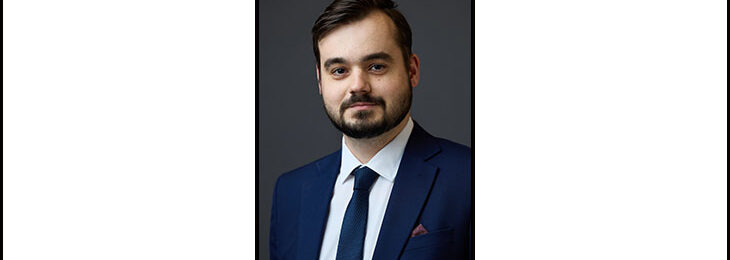

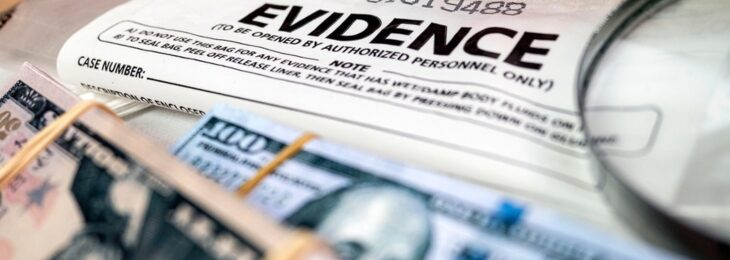
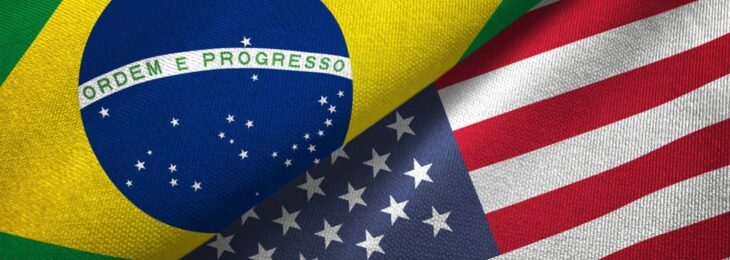
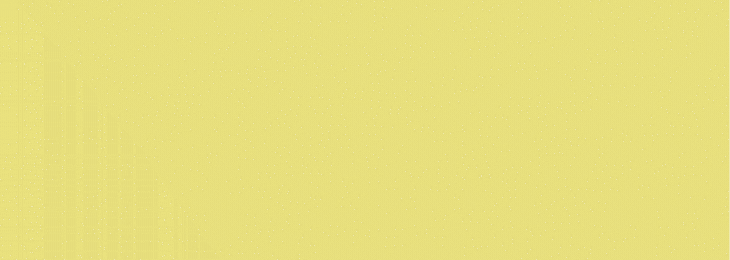





Informative Article!! however, I disagree with ” many of the weaknesses of Islamic finance, including its lack of transparency and accountability, as well as its failure to effectively protect creditors, many of whom found themselves with no recourse, and others the mere hope of cents on the U.S. Dollar for their investment in this once heralded sukuk.”
Most of the Islamic Finance whether it is Sukuk or any other type of finance require Banks, Financier to have full knowledge and information on clients, products in order to void dealing in or with Sharia Complaint products. So there is a good transparency on the beneficial ownership. Lack of transparency came from the fact that, banks were dealing with semi-government companies, when things went wrong banks were looking for local government support to clear the debt.
It may be helpful for you to know that the weaknesses identified in the article are based on comments made by the IFSB and AAOIFI, who are the two main regulators of Islamic Finance.